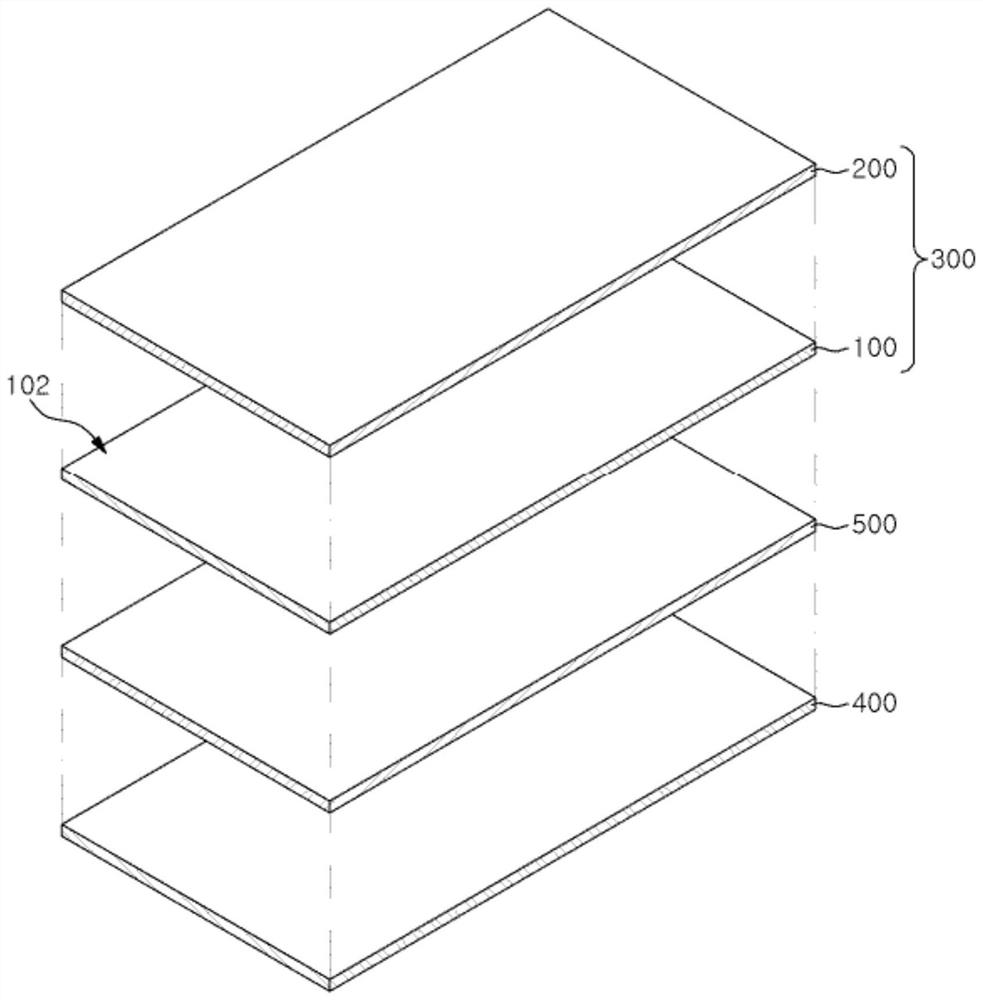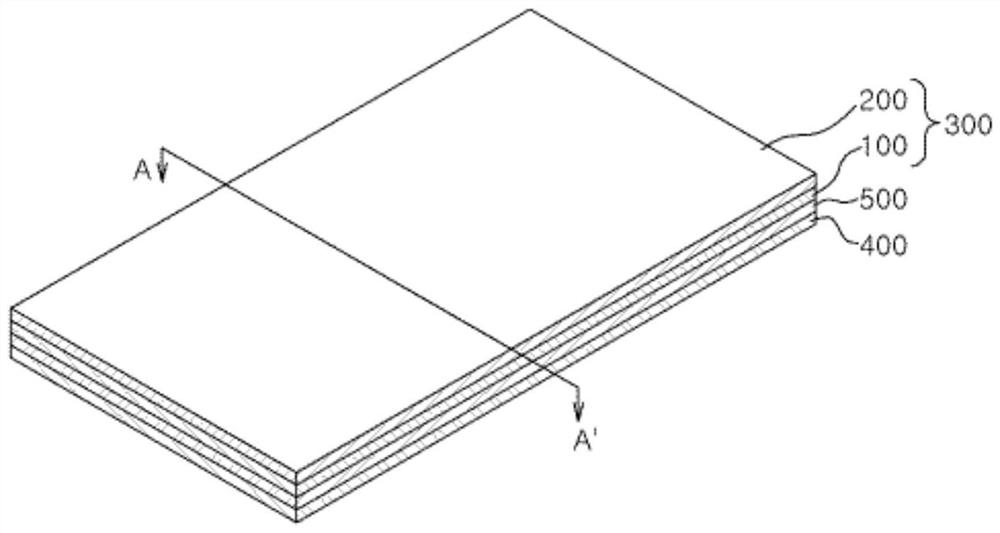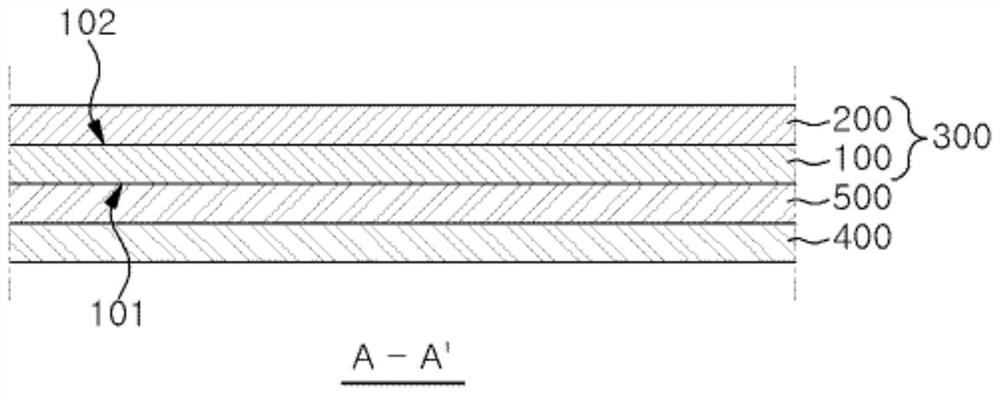Polyamide-imide film, method for preparing same, and covering window and display device including same
A technology of imide film and polyamide, applied in the direction of identification devices, instruments, etc., can solve the problem of damage to optical performance, achieve the effect of improving optical performance and enhancing indentation resistance
- Summary
- Abstract
- Description
- Claims
- Application Information
AI Technical Summary
Problems solved by technology
Method used
Image
Examples
preparation example Construction
[0188] The method of preparing a polyamide-imide film according to the embodiment includes polymerizing a diamine compound, a dianhydride compound, and a dicarbonyl compound to prepare a polyamide-imide polymer solution; charging the polymer solution into a tank; extruding and casting the polymer solution and then drying it to prepare a gel sheet; and heat-treating the gel sheet.
[0189] refer to Figure 4 , the method for preparing a polyamide-imide film according to an embodiment includes: polymerizing a diamine compound, a dianhydride compound and a dicarbonyl compound to prepare a polyamide-imide polymer solution (S100); the step of charging the polymer solution into a tank (S110); the step of extruding and casting the polymer solution and then drying it to prepare a gel sheet (S200); and the step of heat-treating the gel sheet (S300).
[0190] The polyamide-imide film is a film comprising a polyamide-imide polymer. The polyamide-imide polymer is a resin including an am...
Embodiment 1
[0256] A 1-liter glass reactor equipped with a temperature-controlled double jacket was charged with dimethylacetamide (DMAc) as the organic solvent at 20°C under nitrogen atmosphere. Then, 0.2 mol of 2,2'-bis(trifluoromethyl)-4,4'-diaminobiphenyl (TFMB) was slowly added thereto to dissolve. Thereafter, 2,2'-bis(3,4-dicarboxyphenyl)hexafluoropropane dianhydride (6-FDA) was slowly added thereto, followed by stirring for 1 hour. Subsequently, isophthaloyl chloride (IPC) was added, followed by stirring for 1 hour. Terephthaloyl chloride (TPC) was added, followed by stirring for 1 hour, thereby preparing a polymer solution.
[0257] Subsequently, a barium sulfate dispersion (solid content: 18.2 wt %, organic solvent: DMAc) was added to the polymer solution and stirred.
[0258] The polymer solution thus obtained was applied to a glass plate, and then dried with hot air at 80° C. for 30 minutes. It was detached from the glass plate, fixed to a pin plate holder, while being stret...
Embodiment 2 to 8 and comparative Embodiment 1 and 2
[0261] A film was prepared in the same manner as in Example 1, except that the content of each reactant, the type, content and hardness of fillers, etc., were changed as shown in Table 1 below. The filler contents shown in Table 1 below are based on the total weight of the polymer.
[0262]
[0263] The following properties of the films prepared in Examples 1 to 8 and Comparative Examples 1 and 2 were measured and evaluated. The results are shown in Table 1.
[0264] Evaluation Example 1: Measurement of Film Thickness
[0265] The thickness was measured at 10 points in the transverse direction using a digital micrometer 547-401 manufactured by Mitutoyo Corporation. Their average value was used as the thickness.
PUM
| Property | Measurement | Unit |
|---|---|---|
| haze | aaaaa | aaaaa |
| particle size | aaaaa | aaaaa |
| hardness | aaaaa | aaaaa |
Abstract
Description
Claims
Application Information
 Login to View More
Login to View More - Generate Ideas
- Intellectual Property
- Life Sciences
- Materials
- Tech Scout
- Unparalleled Data Quality
- Higher Quality Content
- 60% Fewer Hallucinations
Browse by: Latest US Patents, China's latest patents, Technical Efficacy Thesaurus, Application Domain, Technology Topic, Popular Technical Reports.
© 2025 PatSnap. All rights reserved.Legal|Privacy policy|Modern Slavery Act Transparency Statement|Sitemap|About US| Contact US: help@patsnap.com



